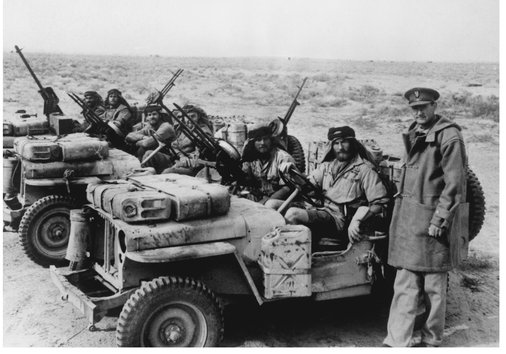
Where it all began. In 1940 Winston Churchill called for Special Duty Volunteers to ‘set the lands of the enemy ablaze’. Cue David Stirling and his Special Air Service (SAS), the butcher and bolt raiders par excellence.
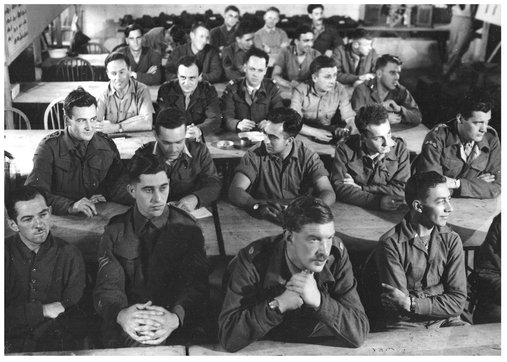
More secretive than the SAS, the Special Operations Executive was Churchill’s shadowy ‘Ministry for Ungentlemanly Warfare’. The SOE taught assassination, sabotage and all the dark arts of war.
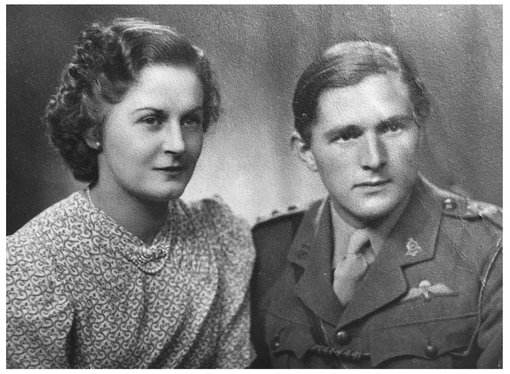
SOE agent Captain Michael Lees, pictured with his wife Gwendoline (also SOE), was charged to make this dirty war a reality. Parachuted into Yugoslavia, he linked up with resistance fighters, blowing up and derailing enemy trains. Often working alone, he would earn the nickname Mike ‘Wild Man’ Lees.

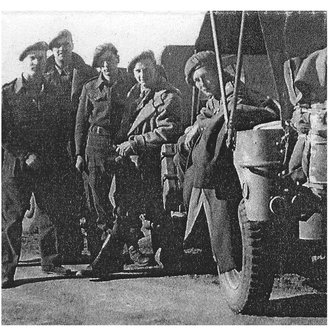
Severely wounded and taken captive in 1941, Major Roy Farran (seated, in jeep) executed a daring and epic escape. Already an SAS legend, in the autumn of 1944 he took his SAS squadron deep behind enemy lines in northern France on a daring mission codenamed Operation Wallace.
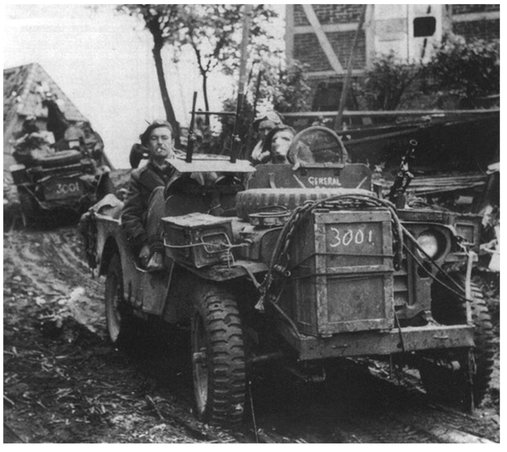
Farran led the spectacularly successful attack on the German garrison at Châtillon, housed in a grand chateau. Hunted remorselessly by the enemy, Farran and his men had to go to ground in woodland, jeeps becoming bogged in autumn mud. They survived by the skin of their teeth.
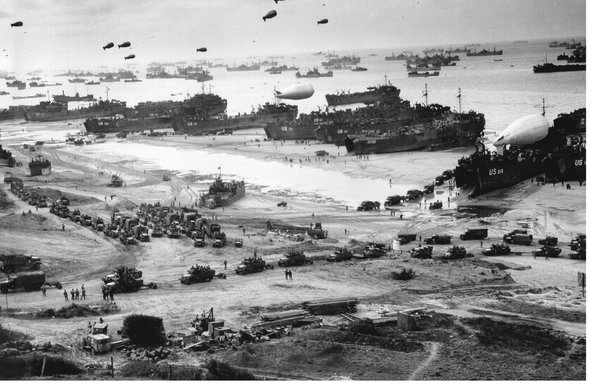
In preparation for D-Day, Churchill charged Allied forces to launch a thrust into the ‘soft underbelly of Europe’ – Italy – to force the enemy to fight on many fronts. But by autumn 1944 the advance had stalled on the fearsome defences of the Gothic Line, a stretch of high terrain across Northern Italy’s Apennine Mountains honeycombed with trenches, tunnels and bunkers. Below, Churchill (in pith helmet) surveys Italian lines.
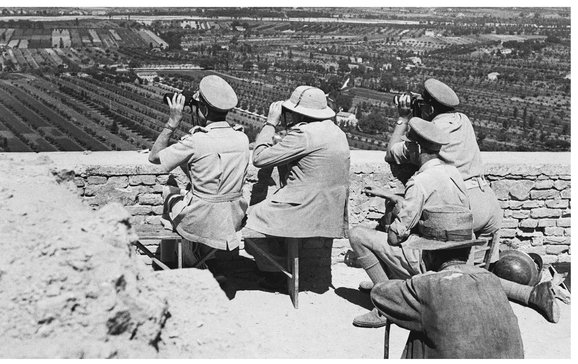
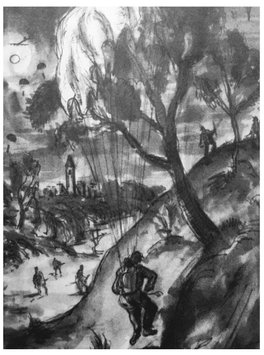
In September ’44 SOE’s Mike Lees was parachuted behind the Gothic Line to link up with the Italian resistance and foment havoc in the enemy’s rear.
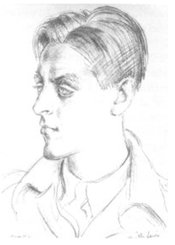
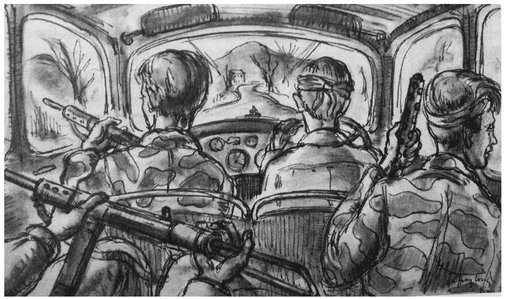
Lees led a highly unusual force, including war artist Geoffrey Long (who drew these images and is pictured in the sketch above), plus war reporter Paul Morton (right). Long and Morton were charged to file stories about how the partisans were raising merry hell. Armed by air-drops from SOE, they ambushed German forces, before driving hell-for-leather for the safety of the mountains, providing Long and Morton with gripping stories.
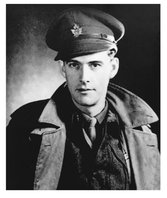
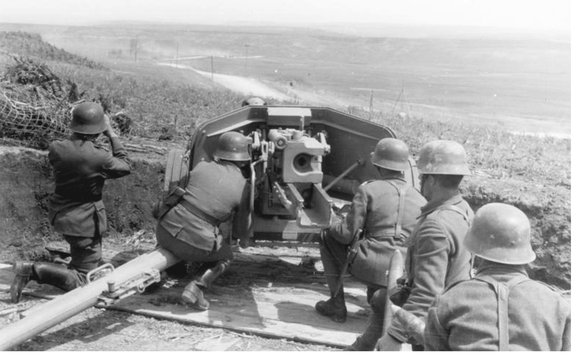
After weeks in the field Lees was tasked to cross the Gothic Line, spiriting vital intelligence to the Allies. Moving on foot, he would have to pass through many kilometres of gun-emplacements, machinegun nests, bunkers and minefields, plus towns blasted apart by fighting.

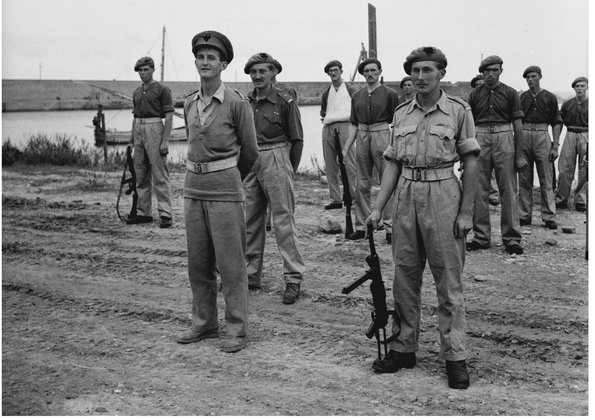
In autumn ‘44 SAS Major Roy Farran (front right of photo, with captured German weapon) deployed to Italy. With Allied forces bogged down on the Gothic Line, the dash and daring of the SAS was in high demand. Farran was placed under joint command of SOE plus those American forces charged to break the Gothic Line.
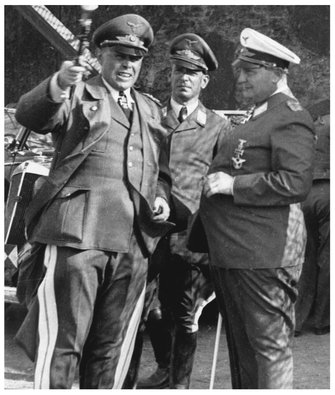
Supreme German commander in Italy, Field Marshal Albert Kesselring (with staff), vowed to give no quarter. One of his greatest problems was the Italian resistance, who’d accounted for some 20,000 German casualties. Backed by Hitler, he ordered savage reprisals against villages he accused of harbouring the partisans.
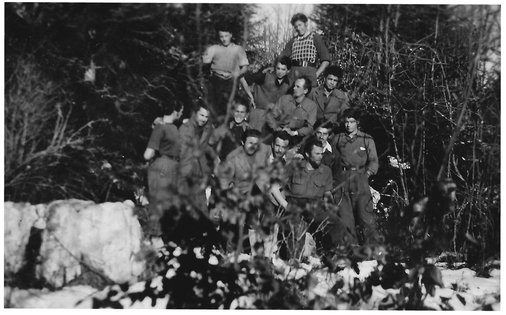
Farran launched his first mission, Operation Cold Comfort, a daring sortie to block the Brenner Pass, the key resupply route for the Gothic Line. It proved disastrous. Despite linking up with partisans, his SAS force – pictured above – was harried across snow-swept mountains.
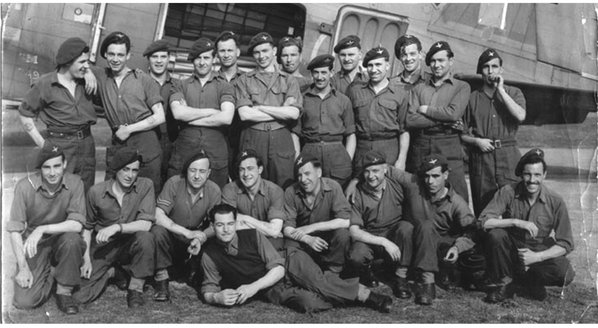
After Cold Comfort, Farran was plagued by guilt. Banned by high command from deploying, he vowed to do so anyway, leading a force of volunteers including ‘Churchill’s Spaniards’ – war-bitten Spanish fighters. Raphael Ramos, kneeling second right, Juan Abadia, on his immediate left, and Francisco Jeronimo (not pictured) were Spanish Civil War and French Foreign Legion veterans.

‘Wild Man’ Lees – arm around horse – was already in the field, along with his radio operator, Bert Farrimond, (standing on his left), priest and partisan commander Don Carlo (astride horse), and fellow SOE agent Major Ernest Wilcockson (on Lees’ right). Lees welcomed Farran and his SAS with open arms.

Having parachuted in against orders on a mission codenamed Operation Tombola, Farran linked up with Lees, billeting his forty-strong SAS at a derelict church. The enemy had executed the priest for supporting the partisans, so there was no more fitting place from which to plot revenge.
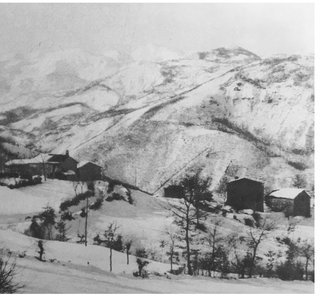
Lees had established his base at the remote village of Secchio, just a few kilometres to the rear of the Gothic Line. From there he called in weapons drops to arm the partisans, and raised a force of female agents – his ‘Stafettas’ – to spy out choice German targets.
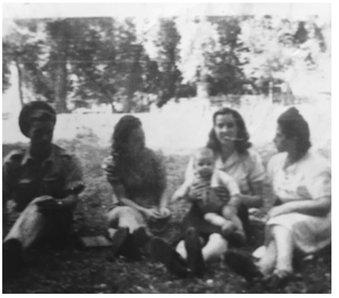
Spanish SAS veteran Franscisco Jeronimo with female recruits. The ‘Stafettas’ were armed and would fight if necessary, but their real power lay in using their seduction skills to lure enemy troops into giving away crucial secrets.
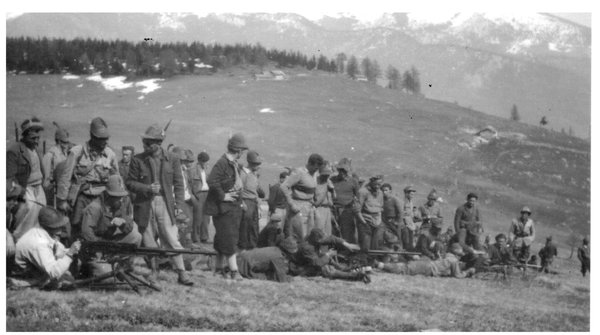
Lees and Farran trained the partisans to use heavy machine guns and mortars, which were parachuted in by fleets of American DC3 ‘Dakota’ cargo aircraft.

Some partisan bands, like this one led by Major Ian Mckenna, were charged to safeguard key targets like hydro-electric dams from enemy sabotage.
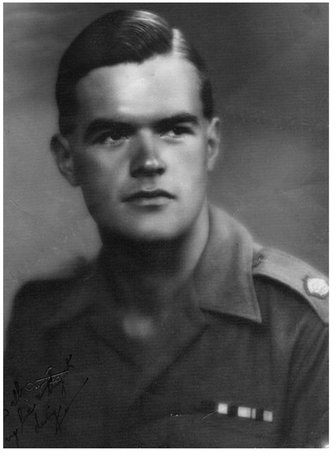
SOE Major Bernard ‘John’ Barton was scheduled to join Lees and Farran, charged to hunt down a top German general, inspiring Lees and Farran to target senior enemy commanders.

Lees sought intelligence on an enemy HQ that Field Marshal Kesselring was known to frequent. Dressed in local garb to recce the target, he discovered that the HQ – seat of the German 14th Army and situated in two fortress-like villas – controlled a vast stretch of the Gothic Line, commanding some 100,000 enemy troops.
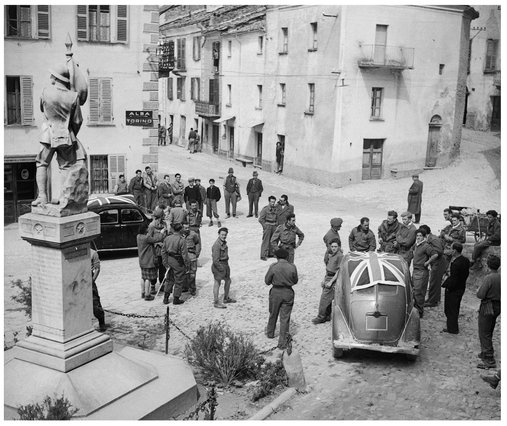
Farran and Lees raised a force to hit the German HQ. It consisted of SAS, Italian partisans, Russian fighters who had fled enemy captivity and a smattering of German deserters. They rode in captured vehicles, Union Jacks roped over the roofs to safeguard them from marauding Allied warplanes.
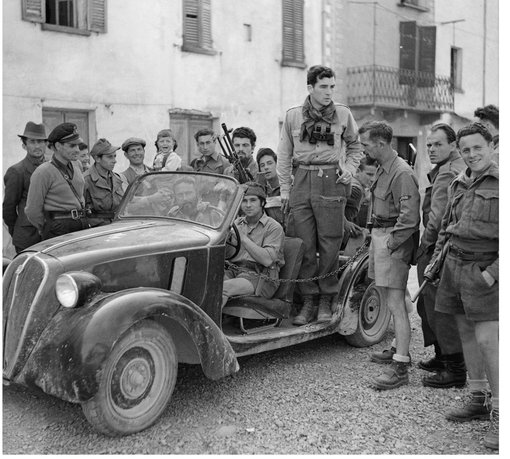
On 26 March 1945 the raiders set out to destroy the HQ and kill the senior officers. Farran and Lees decided to ignore last-minute orders to stand down: it was impossible to command such guerrilla forces to a strict timescale, and they would never get another chance.

The raiders struck at night, having penetrated fearsome defences. Taking the enemy by surprise they torched the HQ villas, killing some sixty enemy and wreaking havoc on the 14 Army’s command and communications.
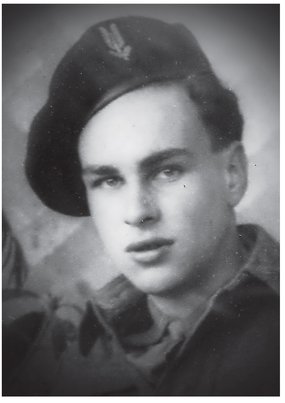
Francis William Mulvey, an SAS veteran, was one of those wounded in action during the 14 Army HQ raid.
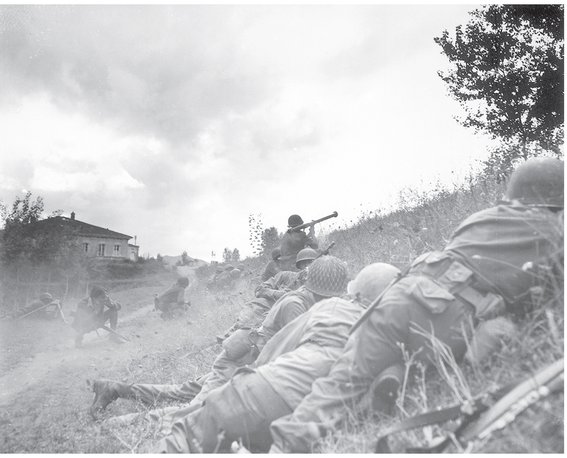
Days later, the Allied assault on the Gothic Line was launched, but the fighting proved ferocious with the enemy giving no quarter.
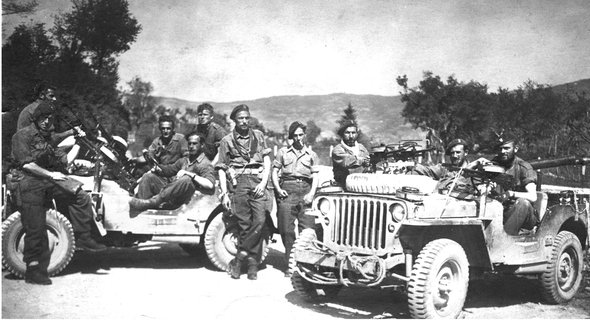
With Lees badly wounded, Farran’s SAS launched all-out warfare, striking hard and fast from their mountain bases. During one such daring raid SAS Spaniard Justo Balerdi – battle name Robert Bruce – (centre photo, with cigarette), was shot in the head and killed.
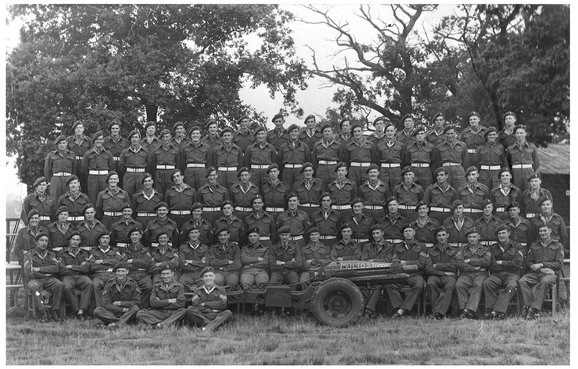
Using mortars and a 75mm Howitzer nicknamed Molto Stanco – ‘very tired’, seen here in a photo with the Italian SAS detachment – the SAS shelled enemy lines, convincing German commanders that Allied forces had broken through and forcing them to abandon their positions.

By the third week of April 1945 the Gothic Line was broken. As northern Italy fell, the SAS staged victory parades with their partisan brothers-in-arms.
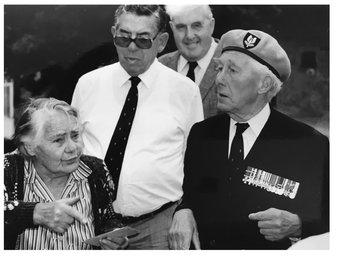
Post-war Roy Farran (in SAS beret) and Mike Lees paid regular visits to commemorate the partisan actions. WWII SAS veteran Jack Mann (in glasses) stands on Farran’s immediate right.
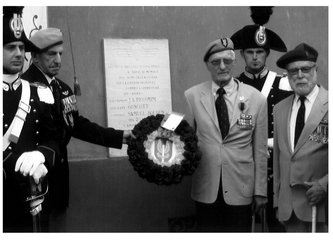
Lest we forget. A reunion at Villa Rossi, former sight of the 14th Army HQ, with SAS veteran Lt. David Eyton-Jones far right. The plaque behind lists those SAS and others who died in the raid.